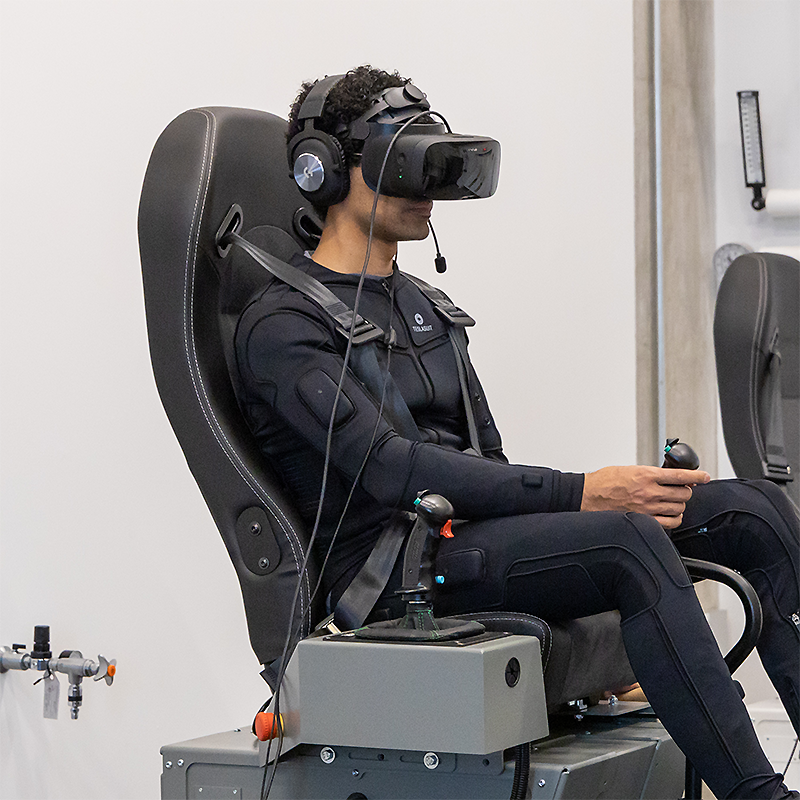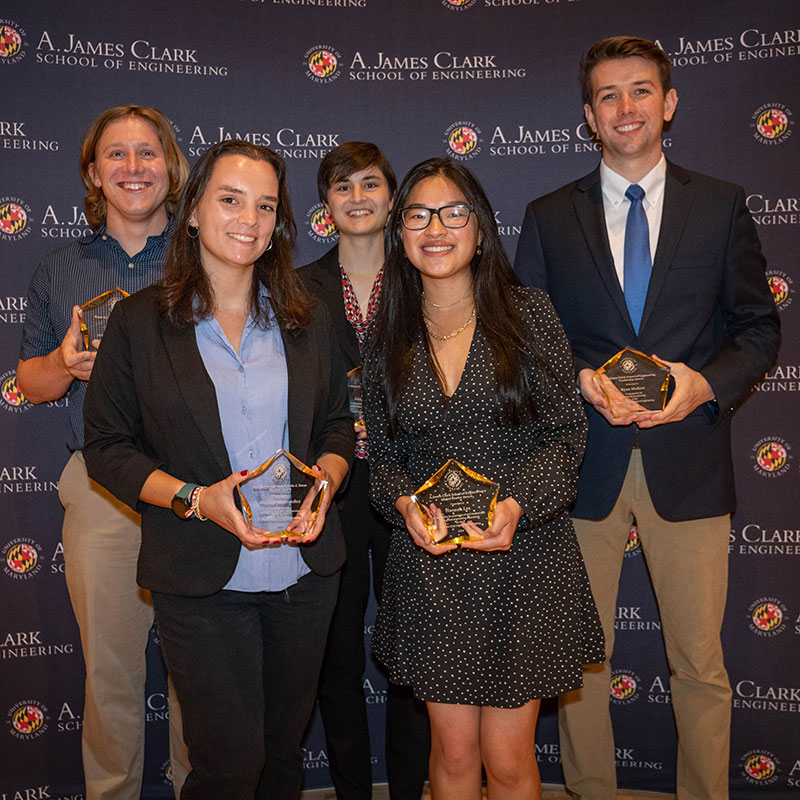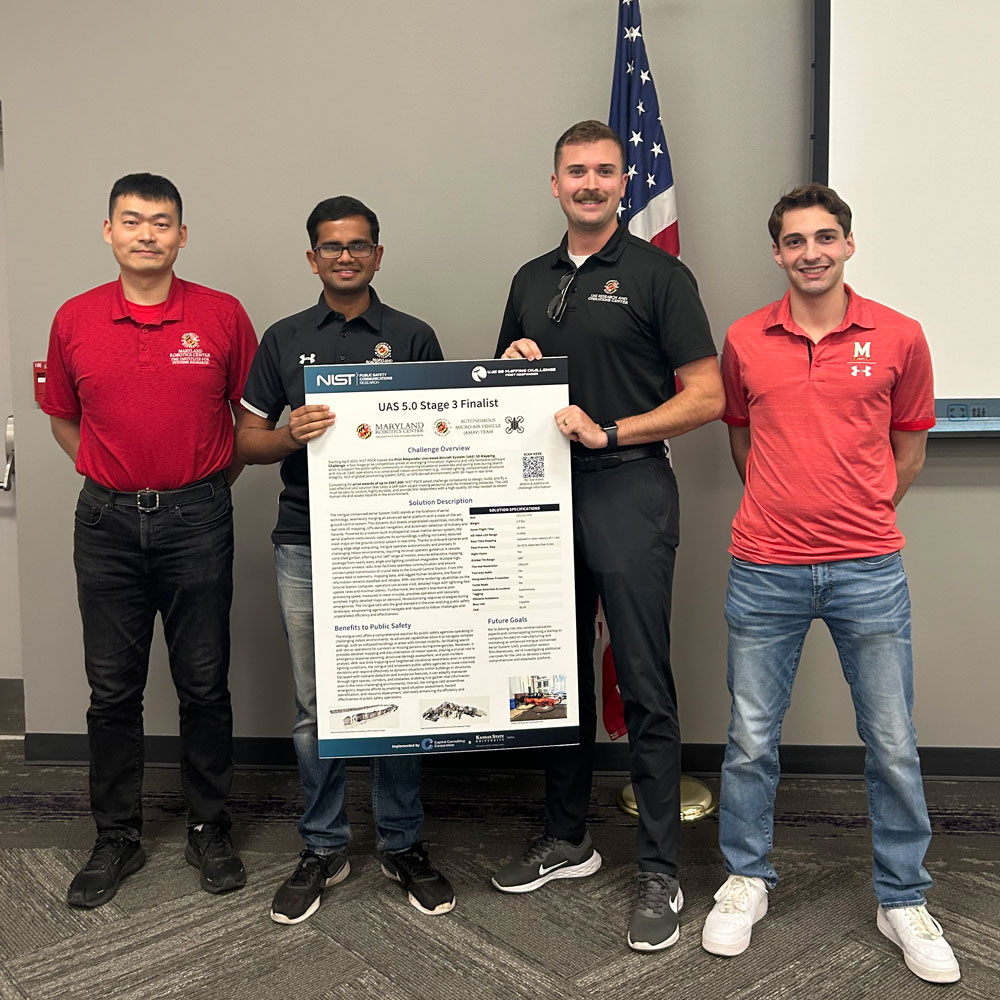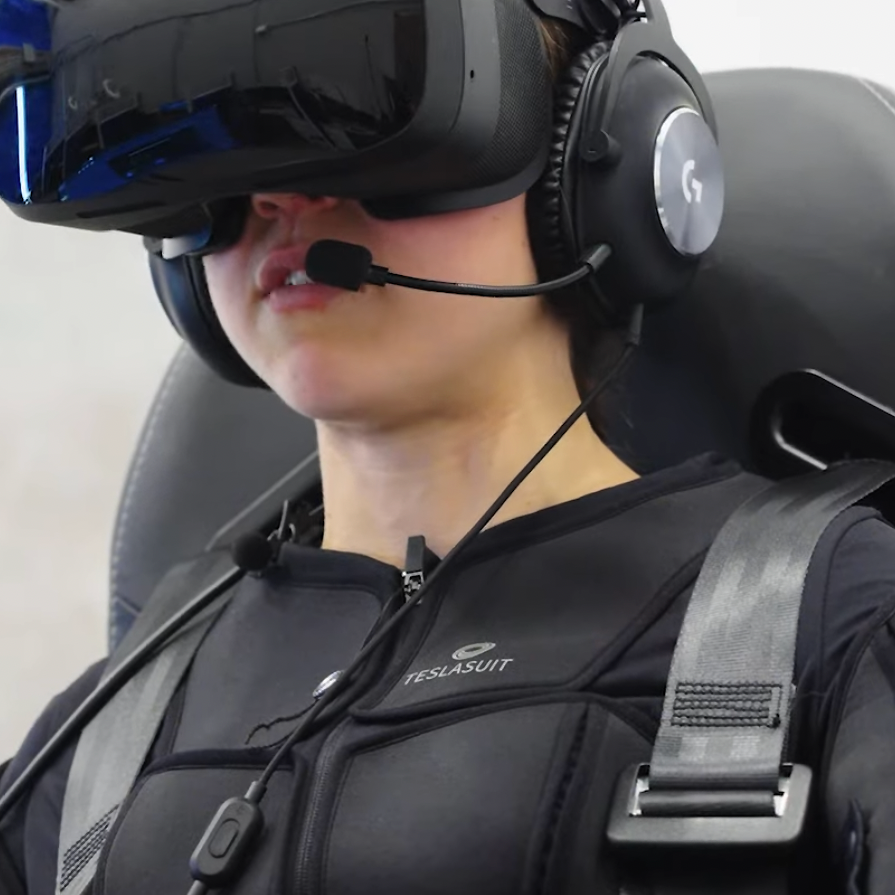News Story
When Vision Fails, a Suit Could Steer Pilots to Safety
At night or in nasty weather, what a pilot feels and what their instruments indicate can be wildly disparate.
This spatial disorientation has been at the root of numerous high-profile plane crashes, including one that killed John F. Kennedy Jr. and wife Caroline Kennedy in 1999. Now it’s the subject of a University of Maryland aerospace engineer’s efforts to recreate those conditions with a flight simulator en route to a solution.
“What if we could use more senses in order to overcome these phenomena and increase the safety of flight?” said Assistant Professor Umberto Saetti.
His test pilots wear a full-body haptic suit, which uses electrical stimulation to help recreate sensations, or even to provide cues such as nudges, to negotiate low visibility and other challenges. The system could even enable visually impaired pilots to rely on senses other than vision for navigation.
In the latest installment of “Enterprise: University of Maryland Research Stories,” UMD engineers explain how they’re working to lighten the cognitive load on pilots to make the skies safer for all.
This feature appeared originally in Maryland Today.
Published April 22, 2024










